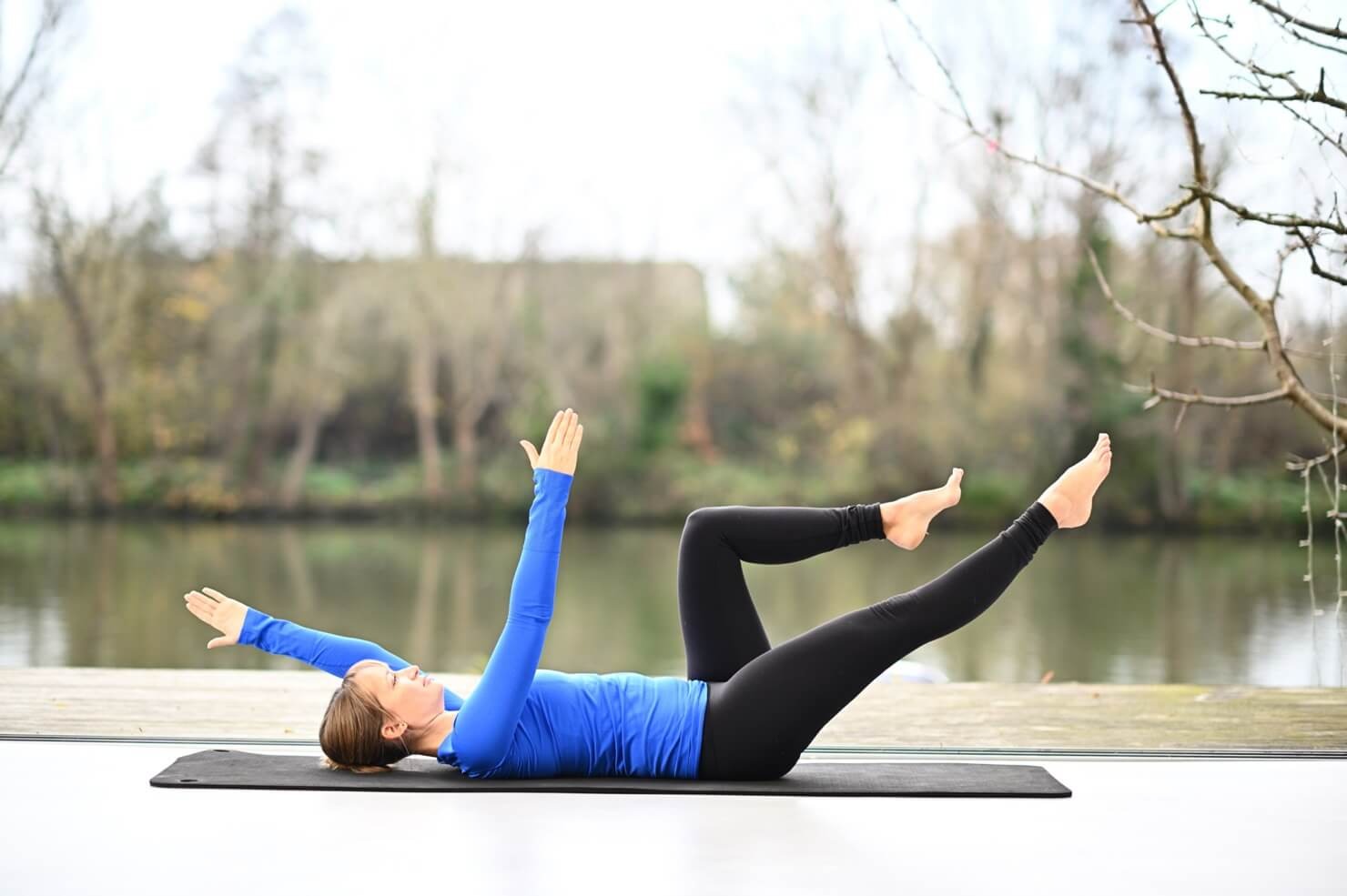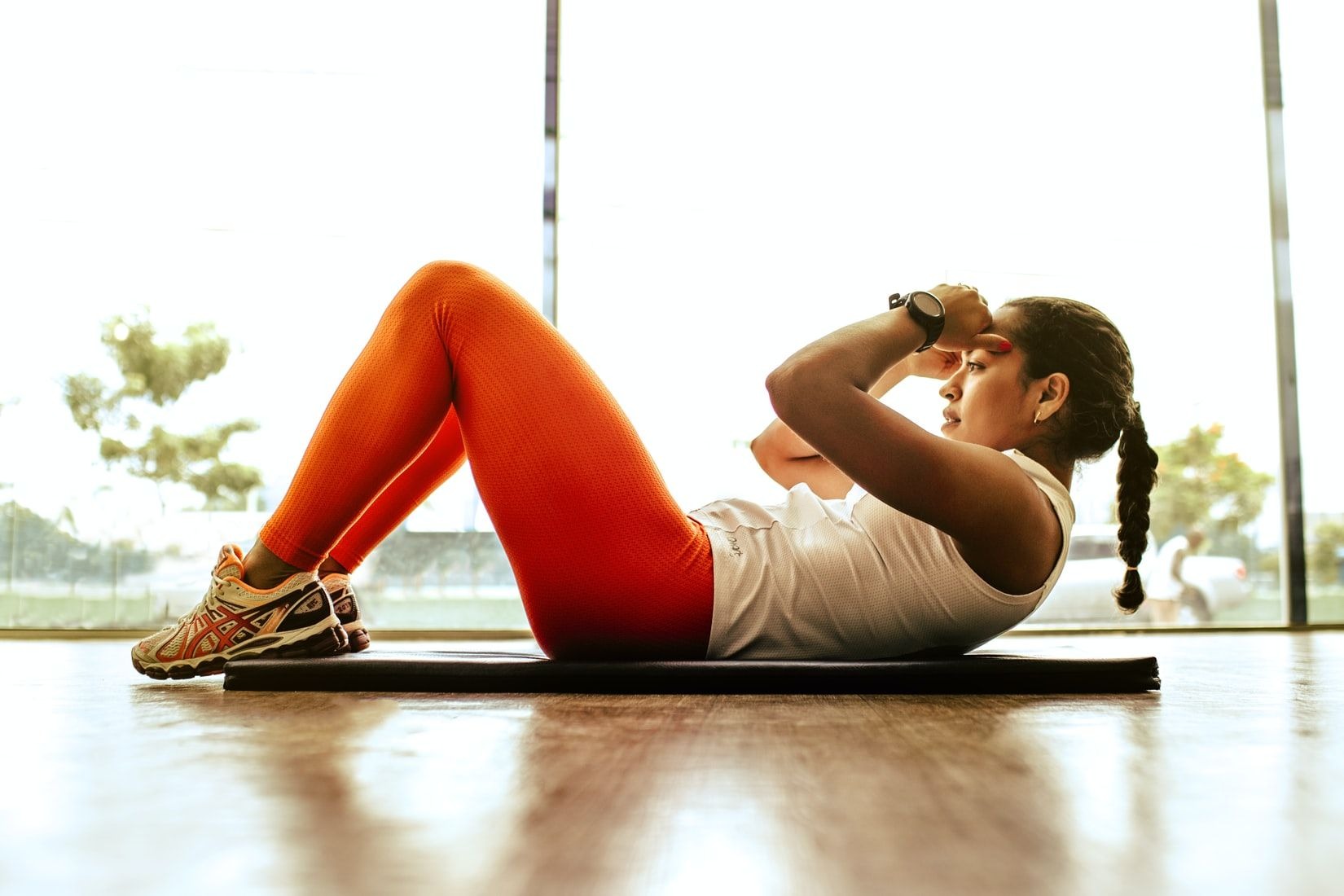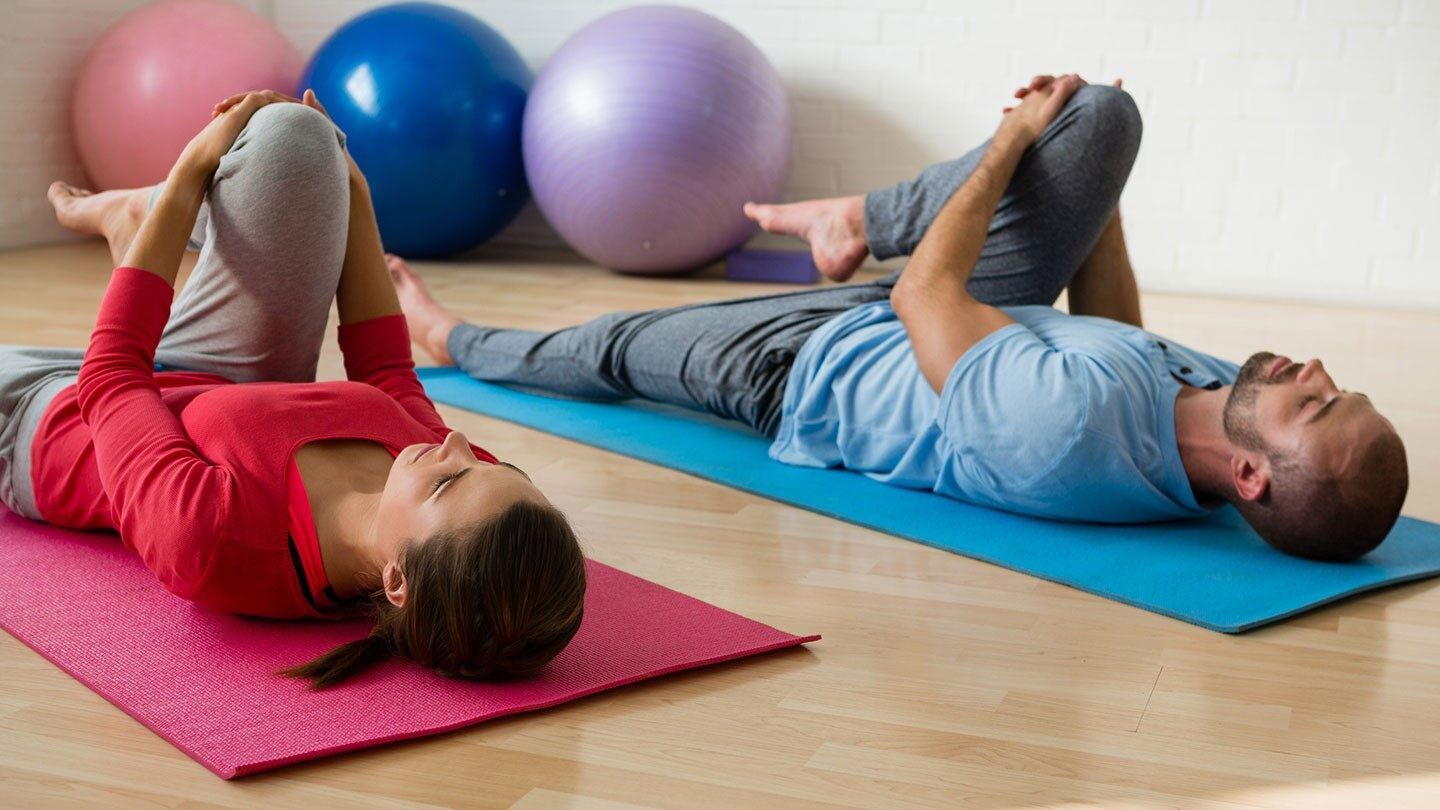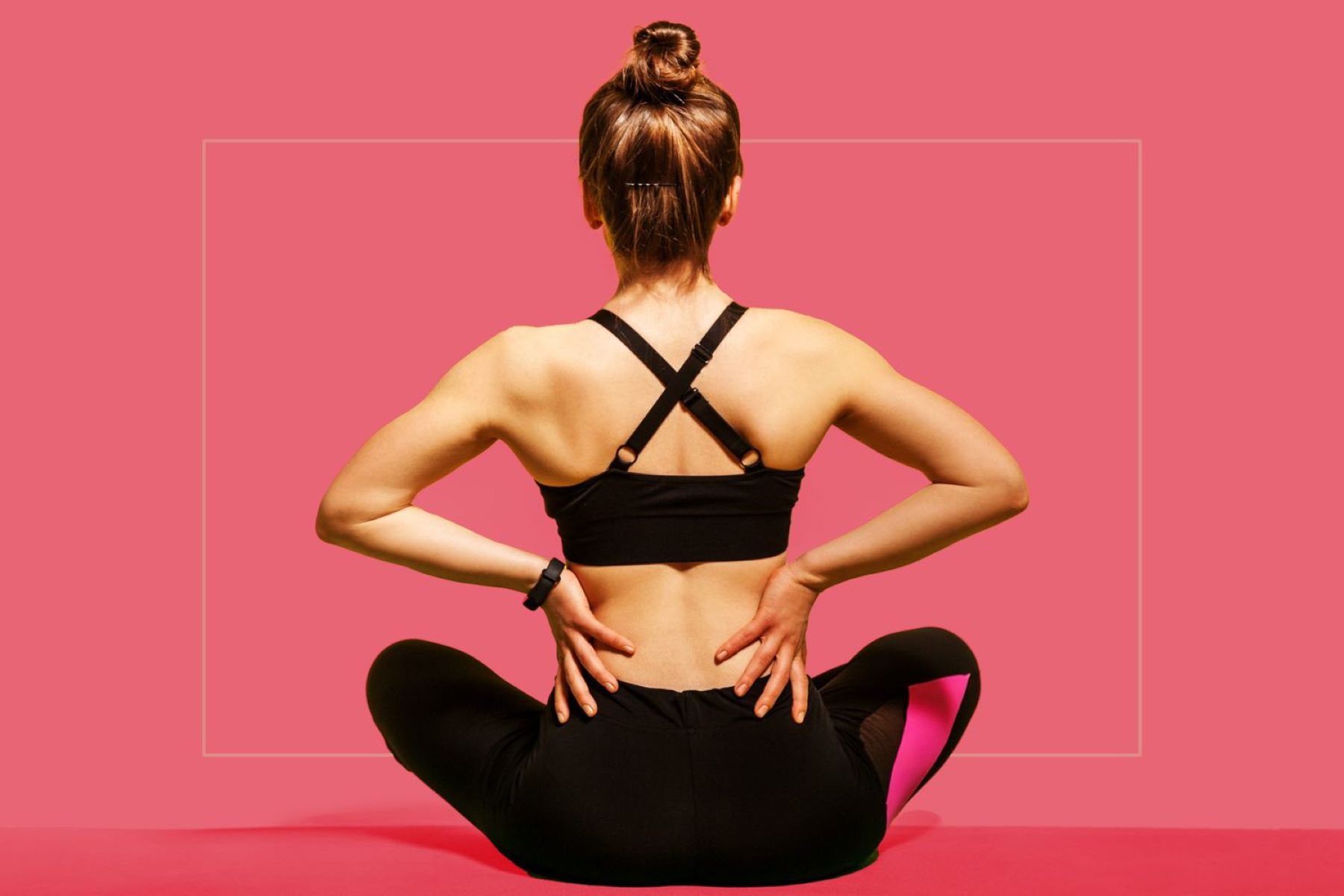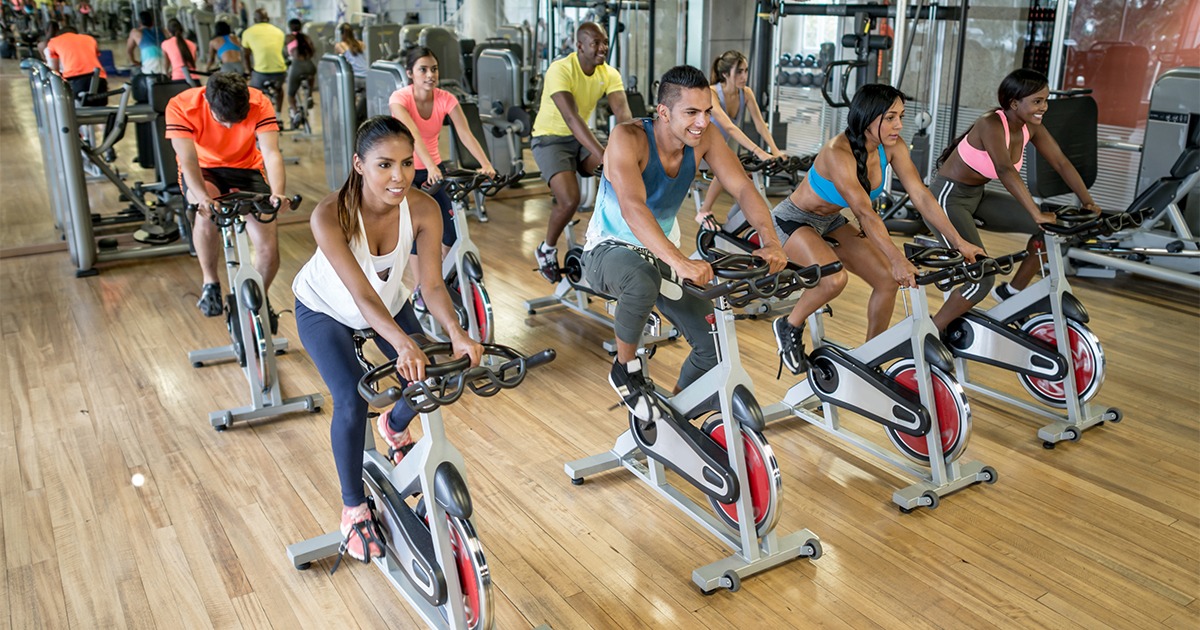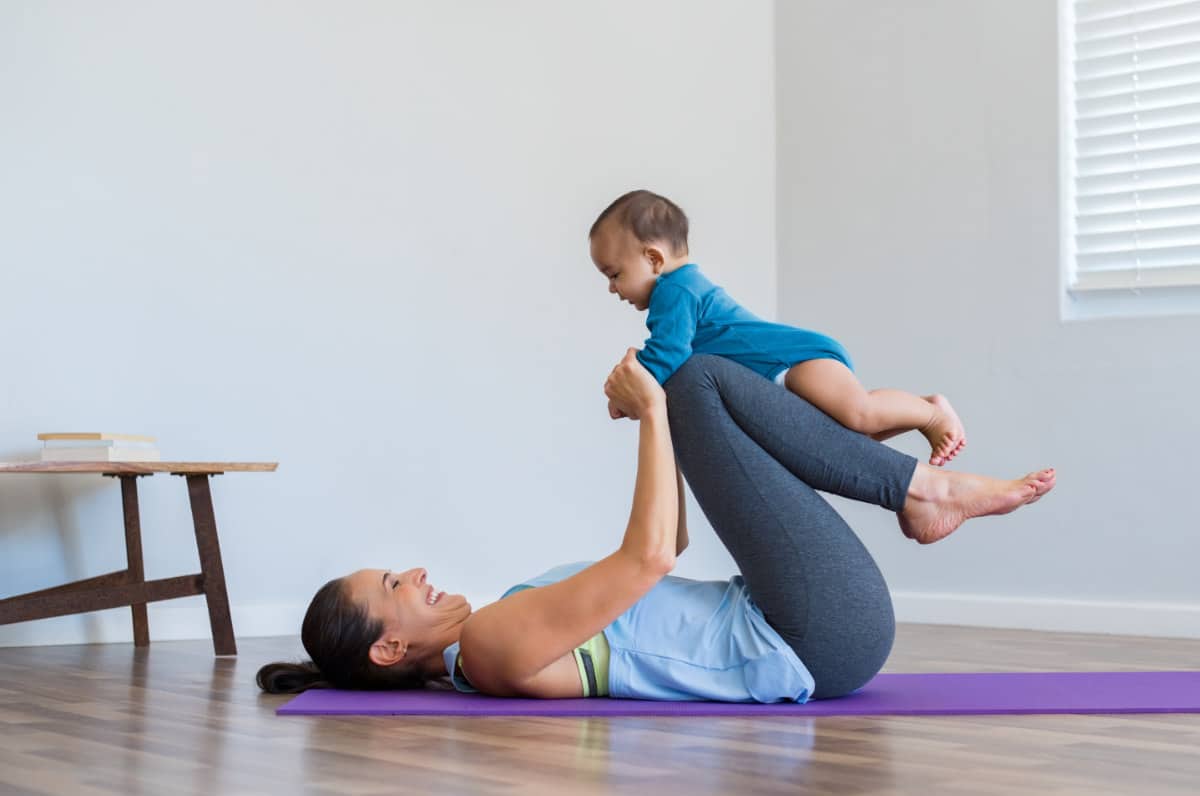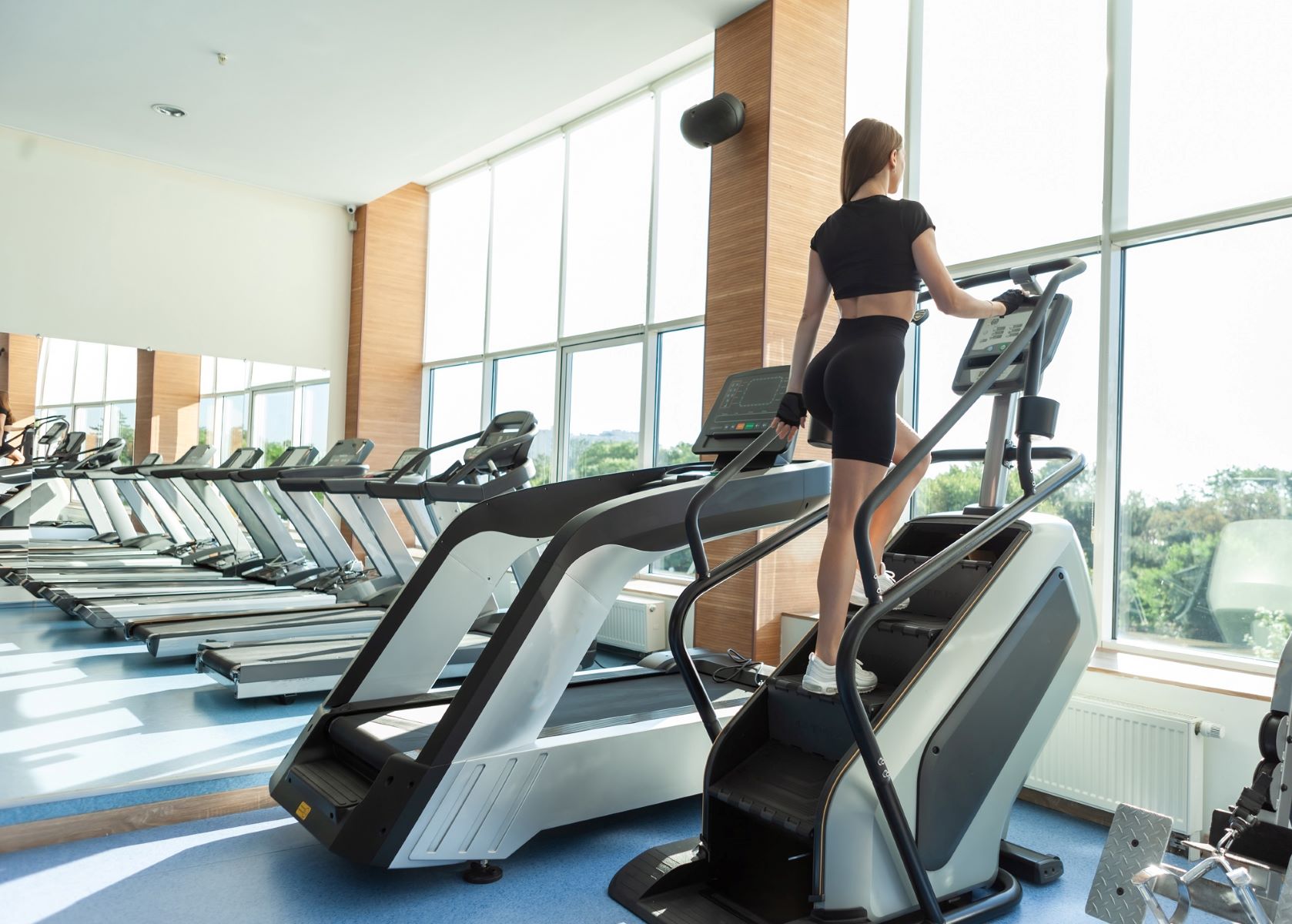Home>Misc>Featured>What Is The Most Effective Core Exercise?
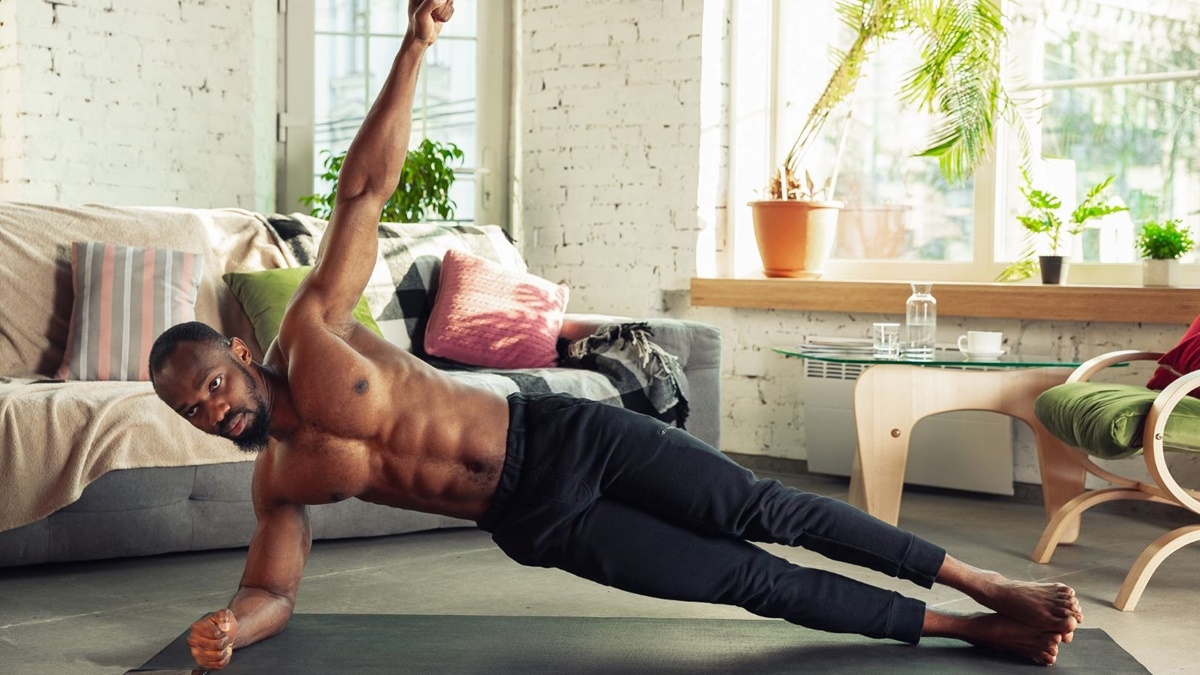

Featured
What Is The Most Effective Core Exercise?
Modified: January 2, 2024
Discover the most effective core exercise for a strong and toned midsection. Get featured with this targeted workout that delivers results.
Introduction
Welcome to the world of fitness, where the quest for a strong and stable core is a top priority for many. The core, which encompasses the muscles in the abdomen, lower back, and pelvis, plays a crucial role in providing stability, balance, and support for the entire body.
When it comes to core exercise, there is a plethora of options to choose from. From traditional crunches to dynamic planks, the choices can be overwhelming. However, not all core exercises are created equal, and finding the most effective one for your fitness goals can be a challenging task.
In this article, we will delve into the world of core exercise and explore the most effective options available. Whether you are a fitness enthusiast looking to strengthen your core or someone who wants to improve stability and balance, this article will provide valuable insights.
When considering the effectiveness of a core exercise, it is essential to understand the factors that contribute to its efficacy. These factors include targeting multiple muscle groups, promoting functional movement, and providing progressive overload to continually challenge the core muscles.
Furthermore, it is crucial to acknowledge that a one-size-fits-all approach to core exercise may not yield the best results. Factors such as individual fitness level, body composition, and specific goals need to be taken into account when choosing the most effective core exercise for you.
So, buckle up and get ready to discover the secrets of effective core exercises. By the end of this article, you will have a clearer understanding of what makes a core exercise truly effective and which exercises you should prioritize to achieve your fitness goals.
The Importance of Core Exercise
Core exercise is not just about achieving six-pack abs or a toned midsection; it is about developing a strong foundation for overall fitness and functionality. The core muscles play a crucial role in supporting and stabilizing the spine, pelvis, and hips, which in turn impact our ability to perform daily activities and athletic movements.
One of the primary reasons why core exercise is important is its impact on posture. Poor posture, which is prevalent in today’s sedentary lifestyle, can lead to muscle imbalances, back pain, and reduced mobility. Engaging in regular core exercises helps strengthen the muscles that support good posture, preventing slouching and maintaining a more upright position.
Moreover, a strong core is essential for improving balance and stability. Whether you are an athlete performing explosive movements or an older adult navigating daily tasks, having a stable core is crucial to prevent falls and injuries. By strengthening the muscles in the abdomen, lower back, and pelvis, core exercises enhance proprioception and coordination, allowing individuals to move with confidence and control.
Additionally, core exercise plays a vital role in improving overall athletic performance. Many sports and physical activities involve rotational movements, such as swinging a golf club or throwing a baseball. These movements generate power from the core muscles, meaning a stronger core translates to improved performance in these activities.
Beyond the physical benefits, core exercise also contributes to better body mechanics and injury prevention. When the core muscles are weak, other muscle groups may compensate, leading to improper movement patterns and increased strain on the joints. By strengthening the core, individuals can maintain proper alignment, distribute forces more efficiently, and reduce the risk of overuse injuries.
Lastly, core exercise can have a positive impact on overall aesthetics. While having visible abdominal muscles may be a desired outcome for some, it is important to note that a strong core extends beyond the superficial layer of muscles. Core exercises engage the deep stabilizing muscles, which might not necessarily result in a six-pack appearance, but will provide a solid foundation for a sculpted and functional midsection.
Now that we understand the importance of core exercise, let’s explore the factors to consider when looking for the most effective core exercises to incorporate into your fitness routine.
Factors to Consider in Effective Core Exercise
When it comes to choosing effective core exercises, there are several factors to take into consideration. These factors can help you determine the best exercises to target your core muscles and maximize your results. Let’s explore some of the key factors:
- Targeted Muscle Groups: An effective core exercise should target all the major muscle groups in the core, including the rectus abdominis, transverse abdominis, obliques, and the muscles of the lower back and pelvic floor. These exercises should engage and strengthen these muscles in a balanced manner.
- Functional Movements: Look for core exercises that mimic real-life movements and activities. Functional movements involve multiple muscle groups working together, promoting overall strength and stability. These exercises can include rotational movements, anti-rotation exercises, and movements that involve stabilizing the spine while performing dynamic movements.
- Progressive Overload: To see improvements in core strength, it is important to continually challenge the muscles with progressive overload. This means gradually increasing the difficulty or intensity of the exercises over time. This can be achieved by adding resistance, increasing the duration or repetitions, or progressing to more advanced variations of the exercises.
- Proper Form and Alignment: Pay attention to proper form and alignment during core exercises. Incorrect technique can lead to ineffective results and potential injury. It is important to engage the core muscles, maintain a neutral spine, and avoid compensatory movements. If needed, seek guidance from a qualified fitness professional to ensure proper form.
- Variety and Progression: Incorporate a variety of core exercises into your routine to target different muscle groups and prevent boredom. Additionally, progress your exercises over time by adding new challenges and variations. This will keep your muscles guessing and prevent plateauing.
- Individual Considerations: Consider your individual fitness level, goals, and any limitations or injuries you may have. Not all core exercises are suitable for everyone. Choose exercises that are appropriate for your current abilities and consult with a healthcare professional if you have any concerns or specific needs.
By taking these factors into consideration, you can select core exercises that are tailored to your needs and goals, ensuring maximum effectiveness in strengthening and stabilizing your core muscles.
Benefits of Strengthening the Core
Strengthening the core muscles offers a wide array of benefits that extend beyond a toned midsection. Let’s explore some of the key advantages of incorporating core exercises into your fitness routine:
- Improved Posture: A strong core helps support good posture by stabilizing the spine and pelvis. Strengthening the muscles in the abdomen, lower back, and pelvis can alleviate muscle imbalances, reduce slouching, and promote an upright position.
- Enhanced Stability and Balance: Core exercises improve balance and stability by engaging the muscles that control and support movements. This is especially beneficial for athletes, older adults, and individuals recovering from injuries who need improved stability to prevent falls and perform activities with confidence.
- Increased Functional Strength: The core muscles play a role in almost every movement we make, whether it’s bending, lifting, or twisting. A strong core enhances functional strength, allowing you to perform day-to-day activities with greater ease and efficiency.
- Better Athletic Performance: Core strength is essential for athletes in almost every sport. It provides a solid foundation for generating power, improves agility and coordination, and helps transfer force between the upper and lower body. By incorporating core exercises into your training, you can enhance your athletic performance and excel in your chosen sport.
- Reduced Risk of Injury: A weak core can lead to compromised movement patterns, muscle imbalances, and increased strain on other parts of the body. By strengthening the core muscles, you can improve overall body mechanics, reduce the risk of injuries, and enhance joint stability.
- Enhanced Spinal Health: The core muscles play a significant role in supporting the spine and maintaining its natural curvature. By strengthening the core, you can reduce the risk of back pain, improve spinal alignment, and promote better spinal health.
- Improved Breathing and Digestion: The muscles of the core also play a role in breathing and digestion. Strong core muscles support proper diaphragmatic breathing, enhance lung capacity, and aid in the efficient functioning of the digestive system.
- Boosted Confidence and Body Image: Developing a strong core can have a positive impact on self-esteem and body image. Increased strength and stability in the midsection can improve body confidence, promote better posture, and enhance overall body aesthetics.
These benefits highlight the significance of incorporating core exercises into your fitness routine. Whether you are an athlete looking to enhance performance, an individual seeking better posture and balance, or someone aiming to prevent injuries and improve overall functionality, strengthening your core can have remarkable benefits for your overall well-being.
Common Core Exercise Mistakes to Avoid
When it comes to core exercises, it is important to perform them with proper form and technique to maximize their effectiveness and minimize the risk of injury. Here are some common mistakes to avoid during your core workout:
- Relying solely on crunches: While crunches are a popular core exercise, solely relying on them can neglect other important muscles and lead to muscle imbalances. Incorporate a variety of exercises that target different areas of the core, such as planks, bridges, and rotational movements.
- Not engaging the core muscles: Many people tend to perform core exercises without properly engaging the core muscles. It is essential to activate the deep abdominal muscles, including the transverse abdominis, by drawing the navel towards the spine. This helps create stability and maximizes the effectiveness of the exercise.
- Using momentum: Using momentum to complete core exercises can diminish their effectiveness. Avoid relying on momentum to power through the movements and instead focus on slow, controlled repetitions. This ensures that the muscles are properly engaged throughout the exercise.
- Neglecting proper breathing: Breathing plays a crucial role in core exercises. Many people tend to hold their breath or breathe shallowly during core movements, which can inhibit the activation of the deep core muscles. Remember to breathe rhythmically and deeply, allowing the diaphragm to move freely.
- Overarching or rounding the back: Maintaining proper spinal alignment is essential during core exercises. Avoid overarching or rounding the back, as this can put unnecessary stress on the spine and lead to discomfort or injury. Keep the spine in a neutral position and engage the core to support the lower back.
- Not progressing the exercises: To continue challenging the core muscles, it is important to progressively overload the exercises. Gradually increase the difficulty by adding resistance, increasing repetitions or duration, or advancing to more challenging variations. Avoid sticking with the same routine for an extended period without progression.
- Ignoring form for quantity: Quality should always take precedence over quantity when it comes to core exercises. Focus on performing each movement with proper form and control, even if it means reducing the number of repetitions. This will ensure that the targeted muscles are effectively engaged and decrease the risk of injury.
- Not allowing for proper recovery: Like any other muscle group, the core muscles need time to recover and repair. Adequate rest and recovery days are crucial to prevent overtraining and optimize muscle growth and strength. Incorporate rest days into your workout schedule to allow the core muscles to recover fully.
Avoiding these common core exercise mistakes will help you get the most out of your workouts, maximize core strength and stability, and reduce the risk of injury. Remember to always prioritize proper form, engage the core muscles, and progress gradually to achieve optimal results.
The Plank: A Highly Effective Core Exercise
When it comes to effective core exercises, the plank takes the spotlight. It is a simple yet highly effective exercise that targets multiple muscle groups in the core, making it a must-have in any core strengthening routine.
The plank primarily targets the deep stabilizing muscles of the core, including the transverse abdominis, internal and external obliques, and the muscles of the lower back and glutes. It also engages the muscles in the shoulders, chest, and legs, making it a full-body exercise that provides numerous benefits beyond just core strengthening.
To perform a plank, start by getting into a push-up position on the floor, with your hands directly under your shoulders and toes pressed into the ground. Engage your core muscles by drawing your navel towards your spine, and maintain a straight line from your head to your heels. Hold this position for as long as you can while maintaining proper form.
The plank offers several advantages that make it a highly effective core exercise:
- Overall Core Strength: The plank engages all the major core muscle groups, including the deep stabilizing muscles. It helps develop a strong and stable core, leading to improved posture, balance, and functional strength.
- Improved Spinal Stability: By holding a neutral spine position during the plank, you strengthen the muscles that support the spine. This can help alleviate back pain, enhance spinal stability, and reduce the risk of future injuries.
- Enhanced Core Endurance: The plank is a static exercise that challenges the core muscles to maintain stability for an extended period. This helps improve core endurance, allowing you to perform daily activities with ease and perform other physical activities more efficiently.
- Increased Abdominal Definition: Regularly performing planks can help tone and define the abdominal muscles, contributing to a more sculpted midsection. While the plank alone may not lead to a six-pack, it helps create a foundation for visible abdominal muscles when combined with a healthy diet and overall strength training program.
- Low-Impact and Accessible: The plank is a low-impact exercise that can be modified to suit different fitness levels. Whether you’re a beginner just starting to build core strength or an advanced exerciser looking for a challenge, the plank can be adjusted by varying the duration, adding instability, or incorporating other movements.
To maximize the effectiveness of the plank, maintain proper form throughout the exercise. Make sure your body remains aligned, with your hips neither sagging nor raised too high. Keep the core engaged and avoid holding your breath, focusing on breathing deeply and rhythmically.
Remember to start with a comfortable duration and gradually increase the time as your strength and endurance improve. Aim for at least 30 seconds to start and work your way up to a minute or more.
Incorporating the plank into your regular core exercise routine will undoubtedly strengthen your core muscles, improve overall stability, and contribute to better posture and functionality in your daily life.
Crunches: Are They Effective for Core Strength?
When it comes to core exercises, crunches have long been a go-to exercise for many individuals aiming to strengthen their midsection. However, the effectiveness of crunches for core strength is often a topic of debate among fitness professionals.
Crunches primarily target the rectus abdominis, the superficial muscle responsible for the “six-pack” appearance. During a crunch, you lift your upper body off the ground, flexing the spine and engaging the abdominal muscles.
While crunches can provide some benefits, it’s important to understand their limitations and consider other exercises to complement your core strengthening routine:
- Limited Muscle Activation: Crunches primarily focus on the rectus abdominis, neglecting other important muscles in the core. To achieve overall core strength, it is crucial to engage and strengthen all the major muscle groups, including the deep stabilizing muscles.
- Potential Neck and Lower Back Strain: Crunches can put strain on the neck, especially if performed incorrectly with excessive pulling on the head. Additionally, the repetitive flexion of the spine during crunches may exacerbate lower back issues in individuals with pre-existing conditions or weak core muscles.
- Minimal Functional Benefits: Crunches involve a narrow range of motion that doesn’t mimic many real-life movements. While they may help improve upper abs’ appearance, they may not transfer well to daily activities or sports that require dynamic core stability and rotational movements.
- Alternative Exercises: There are numerous other exercises that can effectively strengthen the core muscles in a more functional and comprehensive manner. Planks, rotational movements, bridges, and other compound exercises engage multiple muscle groups and promote overall core stability and strength.
- Individual Considerations: The effectiveness of crunches for core strength can vary depending on individual factors such as fitness level, goals, and any pre-existing conditions. Consulting with a fitness professional or healthcare provider can help determine if crunches are appropriate for your specific needs.
While crunches can be included as part of a balanced core workout routine, it is recommended to incorporate a variety of exercises that target all the major muscle groups in the core. This will ensure comprehensive core development and reduce the risk of muscle imbalances or overuse injuries.
Remember that a strong core extends beyond the visible abdominal muscles, and focusing solely on crunches may limit your overall core strength potential. By incorporating exercises that engage the deep stabilizing muscles and promote functional movements, you can develop a well-rounded core that enhances stability, balance, and overall functionality.
Consider working with a qualified fitness professional who can guide you in designing a comprehensive core exercise program tailored to your individual needs and goals. This will help you achieve optimal results and make the most of your core strength training efforts.
Russian Twists: An Effective Core Exercise Option
If you’re looking to add variety to your core workout routine, Russian twists are an excellent exercise option to consider. This exercise targets the obliques, which are the muscles on the sides of the abdomen, making it an effective choice for strengthening the core and improving rotational stability.
To perform Russian twists, assume a seated position on the floor with your knees bent and feet flat on the ground. Lean back slightly, maintaining a straight posture, and lift your feet off the ground, balancing on your glutes. Engage your core muscles as you twist your torso from side to side, lightly touching the floor on each side with your hands or a weighted object. Maintain control throughout the movement and keep your lower back stable.
Russian twists provide several benefits that contribute to core strength and stability:
- Oblique Strength: Russian twists primarily target the oblique muscles, which are essential for rotational movements and core stability. By engaging and strengthening the obliques, this exercise helps improve overall core strength and performance in activities that require twisting and turning.
- Improved Core Stability: The rotational aspect of Russian twists challenges the core to stabilize the spine and pelvis while performing the movement. This helps enhance overall core stability, which is crucial for maintaining proper posture, balance, and spinal alignment.
- Engagement of Multiple Muscle Groups: In addition to the obliques, Russian twists engage other muscles in the core, including the rectus abdominis, transverse abdominis, hip flexors, and lower back muscles. This leads to a more comprehensive activation of the core muscles compared to exercises that target a single muscle group.
- Improved Spinal Mobility: The twisting motion involved in Russian twists helps improve spinal mobility and flexibility. This can contribute to better overall movement mechanics and range of motion in activities that involve rotational movements.
- Variations and Progressions: Russian twists can be modified and progressed to suit different fitness levels and goals. Adding weight, changing the tempo, or incorporating stability equipment like a medicine ball or resistance bands can provide additional challenges and make the exercise more dynamic and engaging.
When performing Russian twists, it’s important to maintain proper form and technique:
- Keep the core engaged throughout the exercise, maintaining a neutral spine and avoiding excessive rounding or arching.
- Focus on rotating from the core, not just moving the arms or shoulders. The movement should originate from the obliques.
- Start with a comfortable range of motion and gradually increase the twist over time as flexibility and strength improve.
- Breathe naturally throughout the exercise, avoiding the tendency to hold your breath.
Adding Russian twists to your core routine can effectively target and strengthen the obliques, improve core stability, and enhance rotational movements. However, it’s important to remember that a well-rounded core workout should include a variety of exercises that target different muscle groups in the core to achieve comprehensive core strength and functionality.
The Bridge: An Effective Exercise for Core Stability
When it comes to core stability, the bridge exercise is a highly effective option to consider. While often associated with targeting the glutes and hamstrings, the bridge also engages the core muscles, making it an excellent exercise for developing overall core stability and strength.
To perform the bridge exercise, start by lying flat on your back with your knees bent and feet flat on the ground, hip-width apart. Engage your core muscles by drawing your navel towards your spine. Pressing through your heels and squeezing your glutes, lift your hips off the ground, forming a straight line from your shoulders to your knees. Hold this position for a few seconds, focusing on maintaining stability and engaging the core, before slowly lowering your hips back down to the ground.
The bridge exercise offers several benefits that contribute to core stability:
- Core Activation: The bridge exercise requires the engagement of the deep core muscles, such as the transverse abdominis and pelvic floor muscles, to stabilize the spine and pelvis during the movement. This activation helps develop a strong core foundation and improves overall core stability.
- Improved Posture and Spinal Alignment: As you lift your hips off the ground in the bridge position, you engage the muscles in the lower back and glutes, which helps maintain proper posture and align the spine. This can contribute to reduced back pain and a more upright posture both during exercise and daily activities.
- Glute and Hamstring Strength: While core stability is the primary focus of the bridge exercise, the glutes and hamstrings also play a significant role in the movement. Strengthening these muscles can enhance overall lower body strength and performance in activities involving hip extension and posterior chain activation.
- Enhanced Hip Stability: The bridge exercise targets the muscles around the hips, including the glutes and hip abductors, which are crucial for maintaining hip stability. Improved hip stability can enhance movement mechanics, reduce the risk of hip injuries, and enhance athletic performance.
- Low-Impact and Accessible: The bridge exercise is a low-impact movement that is accessible to individuals of various fitness levels. It can be modified to suit different abilities by adjusting the range of motion or incorporating variations, such as single-leg bridges or adding resistance through bands or weights.
To maximize the effectiveness of the bridge exercise:
- Focus on maintaining a neutral spine throughout the movement, avoiding excessive arching or rounding.
- Engage the core muscles by drawing the navel towards the spine and maintaining tension throughout the exercise.
- Make sure to distribute the weight evenly through both feet and avoid favoring one side.
- Breathe naturally throughout the exercise, ensuring a continuous flow of oxygen to the working muscles.
Incorporating the bridge exercise into your core routine can provide significant benefits for core stability and overall strength. However, it’s important to combine this exercise with other core exercises that target different muscle groups to attain a comprehensive and well-rounded core strengthening program.
Conclusion
Core exercise is a vital component of any fitness routine, contributing to overall strength, stability, and functionality. While there are countless core exercises to choose from, it’s important to prioritize the most effective options to achieve optimal results. Throughout this article, we have explored various core exercises and discussed their benefits and considerations.
Remember that effective core exercise involves targeting multiple muscle groups in the core, promoting functional movements, and providing progressive overload to continually challenge the muscles. Engaging in a variety of exercises, such as planks, Russian twists, bridges, and more, helps ensure a well-rounded approach to core strengthening.
By incorporating core exercises into your routine, you can enjoy a range of benefits, including improved posture, enhanced balance and stability, increased functional strength, reduced risk of injury, and a more sculpted midsection. Moreover, a strong and stable core can positively impact athletic performance, spinal health, breathing, and digestion.
As you embark on your core exercise journey, be mindful of common mistakes to avoid, such as relying solely on crunches, neglecting proper form, and not allowing for proper recovery. By maintaining proper form, engaging the core muscles, progressing exercises gradually, and listening to your body, you can achieve optimal results while minimizing the risk of injury.
Remember, a strong and stable core extends beyond just visible abdominal muscles. It involves engaging the deep stabilizing muscles, targeting multiple muscle groups, and promoting functional movements. By implementing a well-rounded approach to core exercise, you can improve overall core strength, stability, and functionality.
So, whether you choose to incorporate planks, Russian twists, bridges, or any other effective core exercises, commit to regular practice, and listen to your body. Stay consistent, challenge yourself, and enjoy the journey towards a stronger, stable, and more functional core.
